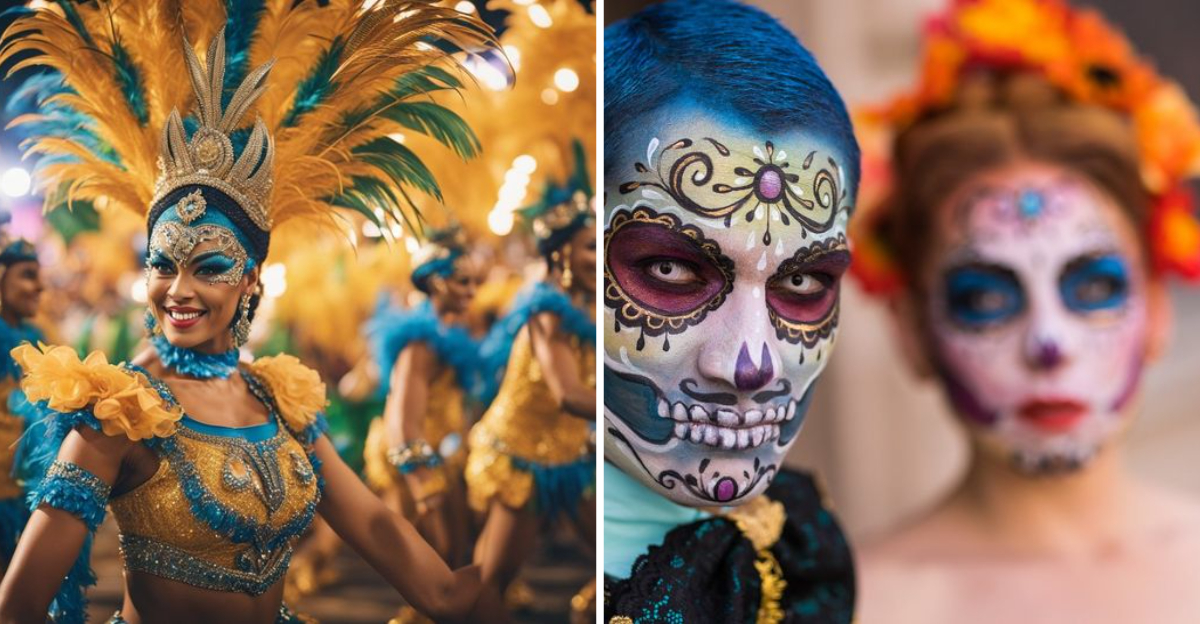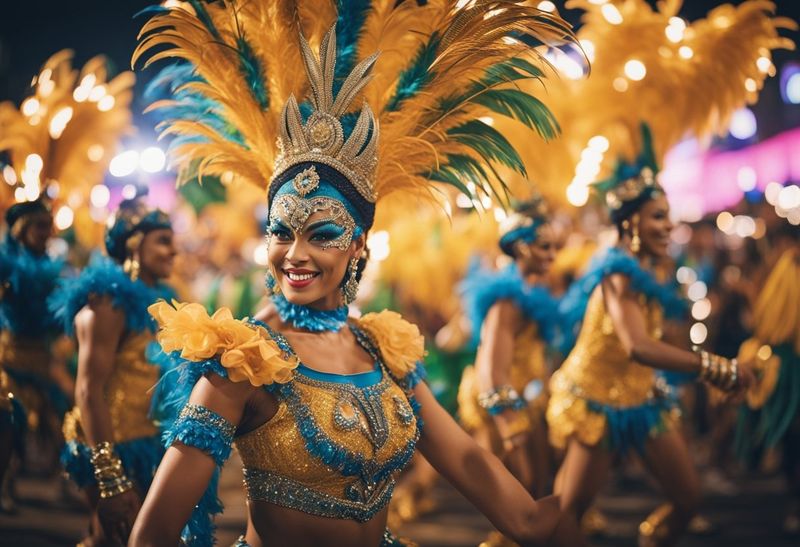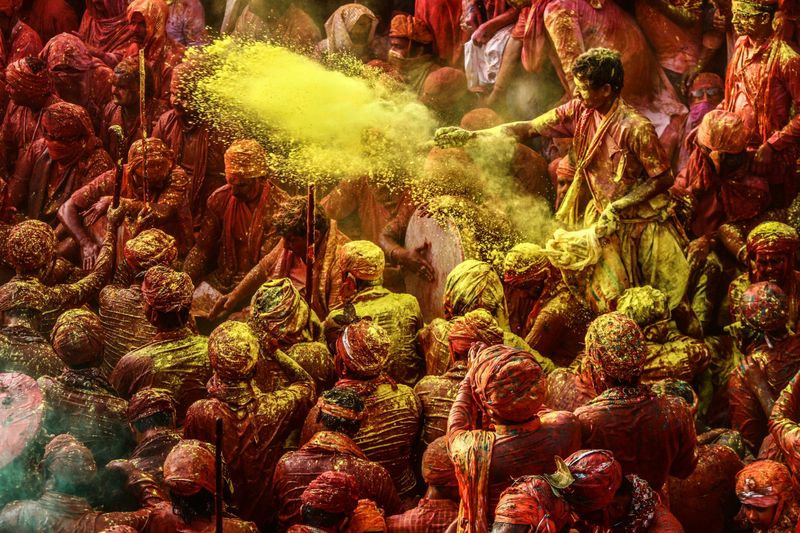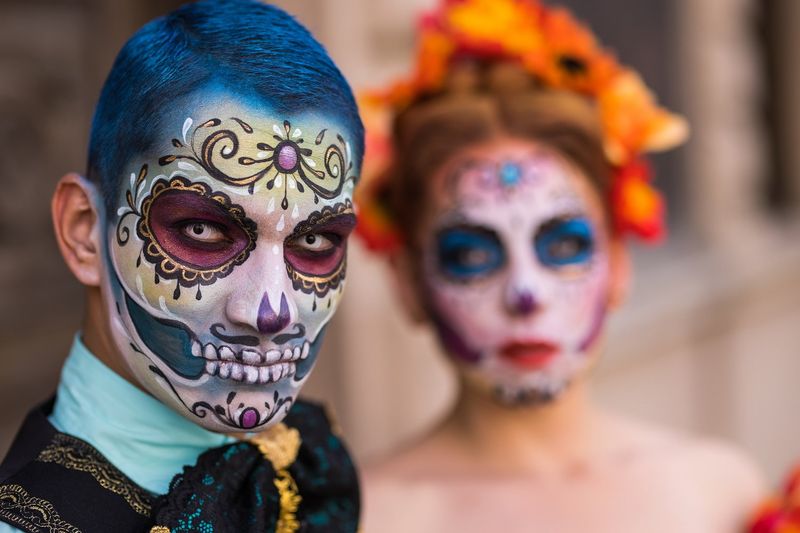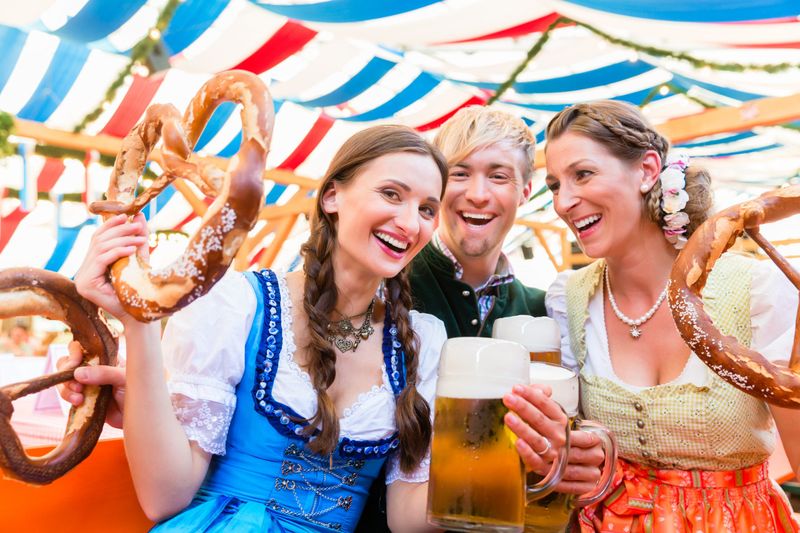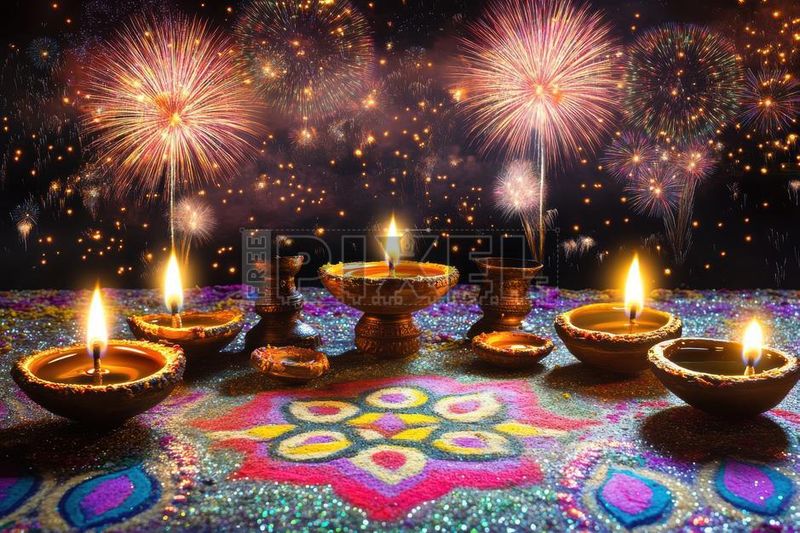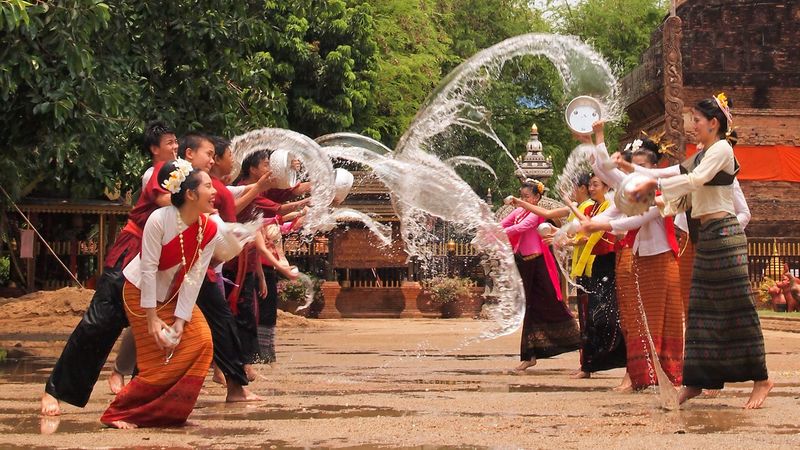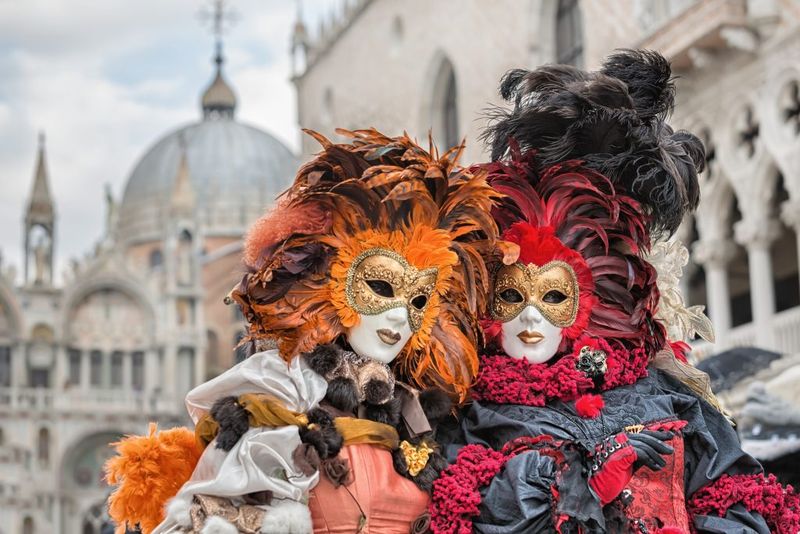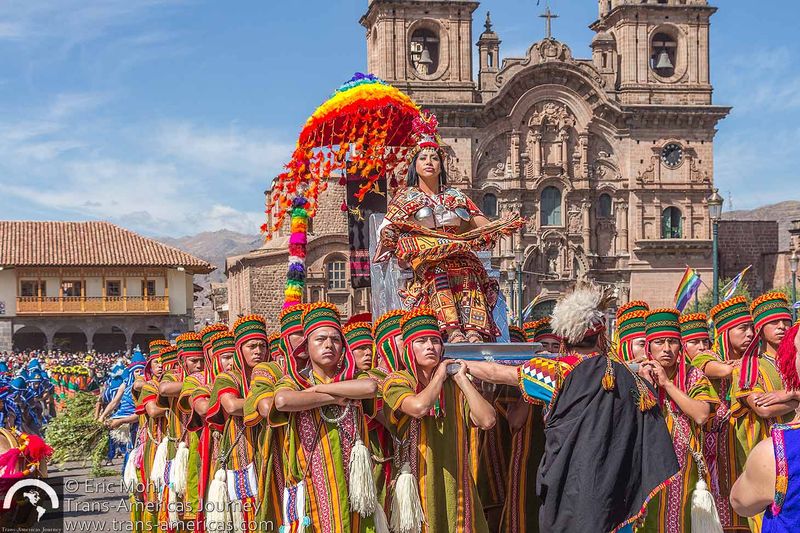Festivals brighten our world with color, music, and shared joy. These celebrations connect us to ancient traditions while creating new memories with loved ones. From tossing tomatoes to lighting lanterns, each festival tells a unique story about the people who created it and why they continue to celebrate today.
1. Rio Carnival: Brazil’s Dazzling Pre-Lenten Celebration
When Portuguese colonizers arrived in Brazil, they brought their pre-Lenten celebration called Entrudo. The locals transformed this tradition by adding African rhythms and indigenous influences, creating something uniquely Brazilian.
By the 1920s, samba schools emerged, turning neighborhood gatherings into spectacular parades. Today’s carnival features elaborate floats, sequined costumes, and infectious music that draws millions of visitors.
The celebration happens during the five days before Ash Wednesday, serving as one final burst of joy before the solemn Lenten season begins. The streets overflow with dancing, while competitive samba schools spend all year preparing for their moment to shine.
2. Holi: India’s Playful Festival of Colors
Ancient Hindu legends tell of a demon king named Hiranyakashipu and his son Prahlad, who worshipped Lord Vishnu against his father’s wishes. The king’s sister, Holika, tried to kill Prahlad but was burned instead while Prahlad survived – symbolizing good triumphing over evil.
Another story connects Holi to Lord Krishna, who mischievously applied color to his beloved Radha’s face. This playful act inspired the festival’s signature tradition.
Communities gather to throw vibrant colored powders and water at friends and strangers alike. Social barriers temporarily disappear as people of all backgrounds join together in this joyful spring celebration marking the end of winter.
3. Day of the Dead: Mexico’s Heartfelt Remembrance
Before Spanish conquistadors arrived in Mexico, the Aztecs dedicated an entire month to honoring deceased loved ones. They believed the goddess Mictecacihuatl watched over the bones of the dead and presided over ancient festivals celebrating their ancestors.
When Catholic missionaries introduced All Saints’ Day, these traditions merged into today’s Día de los Muertos. Families create colorful altars adorned with marigolds, sugar skulls, and photographs of departed loved ones.
Far from somber, this celebration views death as a natural part of life’s cycle. Cemeteries transform into lively gathering places where families share meals, music, and memories with those who have passed on, believing the veil between worlds thins during these days.
4. Oktoberfest: A Royal Wedding That Became Germany’s Biggest Party
The world’s largest beer festival began as something completely different – a royal wedding celebration! In 1810, Crown Prince Ludwig married Princess Therese of Saxony-Hildburghausen, and the citizens of Munich were invited to join the festivities.
Horse races concluded the original celebration, and they proved so popular that they returned the following year. Eventually, agricultural shows and beer stands were added, transforming the event into the beer-focused festival we know today.
Munich’s breweries now construct massive temporary beer halls in the Theresienwiese meadow (named after the princess). Visitors don traditional lederhosen and dirndls while enjoying Bavarian music, giant pretzels, and specially brewed Oktoberfest beer served in one-liter steins.
5. Chinese New Year: Ancient Traditions to Ward Off Monsters
According to ancient Chinese legend, a fearsome beast called Nian terrorized villages each spring, devouring crops, livestock, and even children. Villagers discovered the creature feared loud noises and the color red, so they used these tools to drive it away.
These protective practices evolved into today’s vibrant 15-day celebration marking the lunar new year. Families thoroughly clean their homes to sweep away bad luck before decorating with red lanterns, couplets, and paper cutouts.
Children receive red envelopes filled with money from elders, while dragon and lion dances parade through streets to the sound of crashing cymbals and drums. The celebration culminates with the magical Lantern Festival, where thousands of glowing lanterns illuminate the night sky.
6. La Tomatina: Spain’s Accidental Food Fight Phenomenon
Some festivals arise from centuries of religious tradition – others from pure chaos. La Tomatina began in 1945 when young troublemakers disrupted a parade in Buñol, Spain, grabbing tomatoes from a nearby vegetable stand and hurling them at each other.
Local authorities initially banned this spontaneous food fight, but residents persisted. By 1959, the town officially embraced the messy tradition.
Today’s celebration attracts 20,000 participants to this small town for just one hour of fruity warfare. Trucks deliver 150,000 overripe tomatoes as ammunition, transforming streets into rivers of pulp and juice. Goggles are recommended equipment for this uniquely Spanish brand of messy fun that has inspired similar events worldwide.
7. Diwali: The Luminous Victory of Light Over Darkness
The epic Ramayana tells how Prince Rama rescued his wife Sita from the demon king Ravana after a 14-year exile. Upon their triumphant return to Ayodhya, citizens illuminated the kingdom with clay lamps, creating a path of light guiding them home.
This ancient homecoming inspires modern Diwali celebrations across India and Hindu communities worldwide. For five days, families clean and decorate homes with rangoli patterns, exchange gifts, and prepare sweet treats.
The celebration peaks on the darkest night of the month when millions of diyas (oil lamps) transform neighborhoods into seas of flickering light. Fireworks explode overhead while families perform prayers to Lakshmi, goddess of prosperity, inviting her blessings for the coming year.
8. Songkran: Thailand’s Refreshing New Year Water Festival
April brings scorching heat to Thailand – the perfect backdrop for a nationwide water fight! Songkran originally focused on gentle ceremonial cleansing, where scented water was poured over Buddha statues and elders’ hands as a gesture of respect and renewal.
The Sanskrit word “Sankranti” refers to astrological passage, marking the sun’s movement into Aries and the Thai solar new year. Water symbolizes purification, washing away misfortune from the previous year.
Modern celebrations have amplified the water element into joyful street battles using buckets, water guns, and garden hoses. Locals and tourists alike join the refreshing chaos, though traditional temple visits and family blessings remain important aspects of this beloved Thai celebration that perfectly balances reverence with playfulness.
9. Venice Carnival: Masked Mystery in the Floating City
Behind ornate masks, 12th-century Venetians found temporary freedom from strict social hierarchies. The carnival emerged as a pre-Lenten celebration where nobles and commoners mingled anonymously in the floating city’s squares and palaces.
Elaborate costumes and distinctive masks – from the white-beaked medico della peste (plague doctor) to the mysterious bauta covering the entire face – allowed wearers to engage in behaviors normally forbidden. Napoleon banned these masquerades in 1797 when he conquered Venice, viewing them as dangerous to public order.
After nearly two centuries of silence, enthusiasts revived the tradition in 1979. Today’s carnival spans twelve days of gondola parades, costume contests, and masked balls that transform Venice into a living theater where history and fantasy intertwine.
10. Inti Raymi: The Incan Festival of the Sun Reborn
High in the Andes Mountains, ancient Incas gathered each winter solstice to honor Inti, their sun god and divine ancestor of their emperors. The nine-day celebration featured elaborate rituals, animal sacrifices, and sacred dances intended to persuade the sun to return after the shortest day of the year.
Spanish conquistadors banned this practice in 1535, viewing it as pagan idolatry. For four centuries, the tradition survived only in fragmentary records and secretive indigenous practices.
In 1944, Peruvian scholars resurrected Inti Raymi based on historical chronicles, creating a cultural revival that continues today. Modern celebrations center around Cusco’s Sacsayhuamán fortress, where actors reenact ancient ceremonies while thousands watch. Though sacrifices are now symbolic, the festival remains a powerful connection to Peru’s pre-Columbian heritage.
